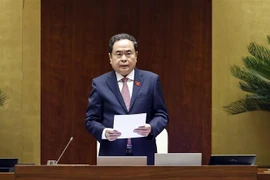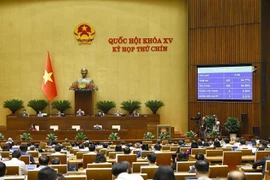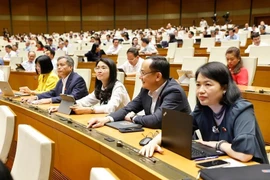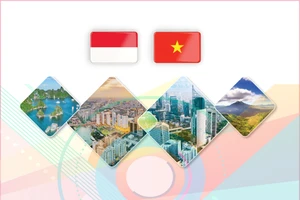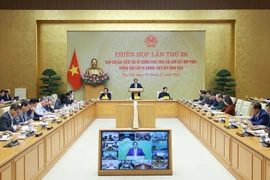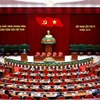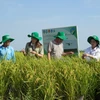Hanoi (VNA) – Governor of the State Bank of Vietnam (SBV) Nguyen Thi Hong has stressed the need to revamp the country’s foreign direct investment (FDI) attraction strategy for the next phase, shifting focus toward the transfer of capital, technology, and management and forging stronger links with the domestic economy.
At a Q&A session of the 15th National Assembly’s 9th session on June 19 morning, Hong cleared up several topics related to growth drivers and outlined solutions to ensure both high and sustainable growth.
She noted that reviewing and reassessing the drivers of economic growth is essential, and this is also mandated by the Party Central Committee, the Politburo, and the National Assembly.
The analysis from an investment perspective shows that the economy’s growth has been heavily capital‑driven, yet efficiency remains low as reflected by Vietnam’s Incremental Capital-Output Ratio (ICOR) being significantly higher than global and regional averages, Hong said, adding that this underscores the imperative to enhance capital‑use efficiency.
She cited Minister of Finance Nguyen Van Thang's speech, saying that Vietnam can fully allocate the necessary funding while safeguarding the public debt and foreign debt indicators.
According to the central bank governor, looking ahead to 2045, Vietnam plans to implement many large‑scale projects, requiring relevant ministries to identify funding sources, borrowing capacity, and mobilisation methods. The implementation process requires setting up disbursement schedules and contingency reserves to ensure that financing is secured before projects begin. This approach helps avoid funding gaps, allowing projects to proceed smoothly without putting excessive strain on the macroeconomy. It aims to achieve strong and sustainable growth per the resolutions of the Party Central Committee, the Politburo, and the National Assembly.
Hong underlined the need to tap into domestic consumption and leverage the domestic demand as key growth drivers, to sustain economic growth and reduce reliance on exports, which are vulnerable to shifts in the macroeconomic conditions of other countries worldwide.
Only breakthroughs in technology, innovation, and digital transformation can drive productivity gains and enable double-digit growth, she noted, adding that it is crucial to address key obstacles to long-term growth, such as climate change and the risk of population aging.
Regarding the role of the banking sector in promoting economic growth drivers, Hong said that as the lifeblood of the economy, the banking sector plays a key role in mobilising idle capital for lending, thereby activating, guiding, and spreading momentum across growth drivers.
She revealed that during this term, credit growth in the banking system has increased by around 14–15%, a rate that is relatively high compared to many countries around the world.
By late 2024, the credit-to-GDP ratio reached 134%, underscoring the critical role of bank credit in driving economic development. Credit not only fuels investment in production but also supports consumption and export growth. The SBV has set a credit growth target of 16% in 2025, with room for adjustment depending on inflation remaining under control.
As the core provider of payment and financial services, the banking system will continue to grow robustly, diversifying its services to meet the demand of businesses and people.
For monetary policy management, Hong stated that the central bank will keep a close watch on economic developments to adopt flexible and appropriate policy tools, control inflation, maintain macroeconomic stability, ensure stability in the monetary and foreign exchange markets, and the safety of the banking system.
In response to lawmakers' concerns about implementing the 2% interest rate support policy for loans related to green and circular projects and those applying ESG standards in line with Resolution 68 of the Politburo on the development of the private economic sector, Hong stated that the SBV will work closely with the Ministry of Finance to issue clear guidelines to address the shortcomings of the interest support package under the economic recovery programme.
In his remarks, NA Chairman Tran Thanh Man called on the central bank to promptly develop an effective plan to implement the 2% interest rate support policy, noting that this is a measure of great concern to the business community./.
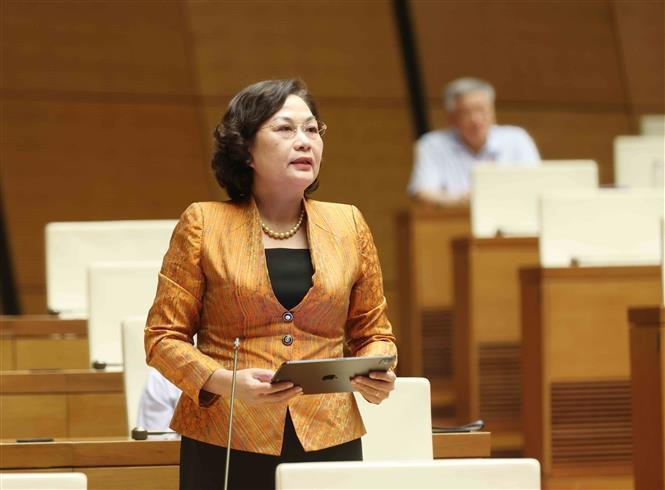
See more
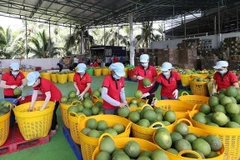
Vietnam's fruit, vegetable exports hit record in 2025
In the first 11 months of 2025, total fruit and vegetable exports reached 7.75 billion USD, up 17.3% year on year.
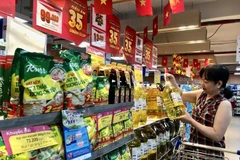
Vietnam's retail market hits 269 bln USD as e-commerce booms: report
Modern retail infrastructure in Vietnam grew substantially, reaching 1,293 supermarkets and 276 shopping malls nationwide, complemented by 8,274 traditional markets. The expansion has transformed urban economy and driven a consumer shift toward modern retail formats.
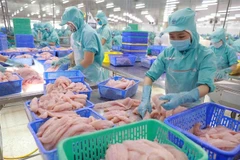
Aquatic exports to set new record in 2025
Vietnam’s seafood exports are on track to reach a new record in 2025, despite ongoing global challenges. In the first 11 months, export turnover topped USD 10.5 billion, up 14.6% year on year, according to industry data.

Ministry of Industry and Trade invites VNG to clarify data collection on Zalo
VNG is required to submit all relevant documents pertaining to the terms of service currently applied to individual users of Zalo in Vietnam, along with any updates made over the last 12 months. For each version of the terms, the VCC requests details about the date of issuance, its effective date, and the method of publication to users.
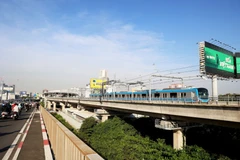
HCM City accelerates metro development with dual-track strategy
According to the plan, construction of Metro Line No.2 (Ben Thanh–Tham Luong) is scheduled to begin on January 15, 2026. Immediately after finalising the groundbreaking timeline, the municipal People’s Committee instructed relevant agencies to roll out TOD projects along the route.
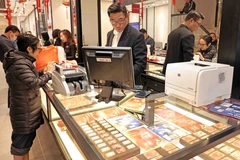
Vietnam tightens rules on gold, foreign currency trading with new penalties
The Government has issued Decree No. 340/2025/ND-CP on administrative penalties in the monetary and banking sector, set to take effect on February 9, 2026.

Strengthened inspection, supervision needed in areas prone to corruption
The goal of this plan is to improve the efficiency and effectiveness of thematic inspections; prevent and swiftly address corruption and misconduct; reinforce the accountability of agencies and individuals involved in handling criminal information; and foster greater cooperation among relevant bodies, thus contributing to upholding discipline and the rule of law.

Reference exchange rate down on December 30
With the current trading band of +/- 5%, the ceiling rate applicable for commercial banks during the day is 26,380 VND/USD, and the floor rate 23,868 VND/USD.
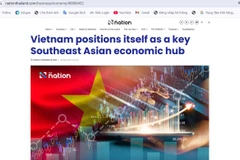
Vietnam positions itself as a key Southeast Asian economic hub: Thai newspaper
According to the article titled “Vietnam positions itself as a key Southeast Asian economic hub,” Vietnam is currently among the fastest-growing economies in the ASEAN. Citing data from the Thai Chamber of Commerce and Industry in Vietnam, it said Vietnam’s gross domestic product (GDP) recorded strong quarterly growth in 2025, rising by 6.93% in the first quarter, 7.7% in the second quarter and 8.23% in the third quarter - far outpacing many regional economies.

Vietrade warns of scams related to National Fair – Spring 2026
According to Vietrade, in recent days a number of individuals and organisations have been disseminating unverified and misleading information on social media platforms, online groups and other communication channels. These entities have impersonated the Spring Fair 2026 organising board or falsely claimed to be authorised agents or representatives working with the organisers, in order to solicit registrations from organisations and enterprises via unofficial links for the purpose of illicit gain.

Hai Phong records positive progress in combating IUU fishing
According to the Hai Phong municipal Department of Agriculture and Environment, the city currently has 788 fishing vessels. All vessels have been fully registered and licensed, with their data verified on VNeID and updated on the national fisheries management system VNFishbase. They have also been equipped with vessel monitoring system (VMS) devices, ensuring that no fishing vessels operating in the city fall short of regulatory requirements.
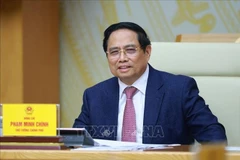
PM chairs first meeting of Government steering committee for macroeconomic management
Prime Minister Pham Minh Chinh stressed that in 2026, with the goal of achieving double-digit growth, priority must continue to be given to maintaining macroeconomic stability, controlling inflation, promoting growth and ensuring major economic balances.
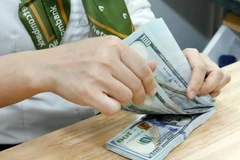
HCM City’s remittances forecast to hit record high in 2025
In the first nine months of 2025, remittances to HCM City reached 7.94 billion USD, up 6.3% year-on-year, keeping it the country’s largest recipient, consistently accounting for about 60% of the national total.

Tra fish exports forecast to near 2.2 billion USD
Tra fish output in 2025 is estimated at around 1.67 million tonnes. To date, the sector has contributed approximately 2.1 billion USD to Vietnam’s total agro-forestry-fisheries export earnings.
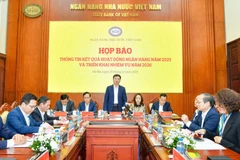
Credit growth nears 18% in 2025: central bank
At a press conference on banking sector performance in 2025 and tasks for 2026, held in Hanoi on December 29, SBV Deputy Governor Pham Thanh Ha said that as of December 24, 2025, total outstanding credit to the economy exceeded 18.4 quadrillion VND (about 670 billion USD), up 17.87% compared to the end of 2024.
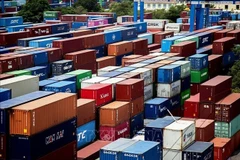
Vietnam urged to unlock bottlenecks to boost logistics competitiveness
In recent years, the country’s logistics services industry has experienced strong expansion, gradually establishing a presence in regional and global markets. However, development still falls short of Vietnam’s potential and advantages.
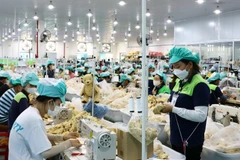
Key economic policies taking effect in January 2026
A wide range of new economic policies and legal provisions will come into force in January 2026, covering taxation, advertising, land use, minimum wages, public finance, railways, technology transfer and statistics, among others.

Vietnamese tech firms step up investment in strategic high-tech sectors
Vietnamese technology enterprises are committing strong investment in strategic technologies as they seek to master core platforms and enhance national competitiveness.

Hanoi leads 2025 Vietnam eBusiness Index
The average score of the rankings is 9.3 points. The gap in e-commerce development between the two major economic centres–Hanoi and HCM City–and the remaining provinces and cities is very large.
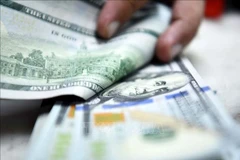
Reference exchange rate down 3 VND at week’s beginning
With the current trading band of +/- 5%, the ceiling rate applicable for commercial banks during the day is 26,381 VND/USD, and the floor rate 23,869 VND/USD.
